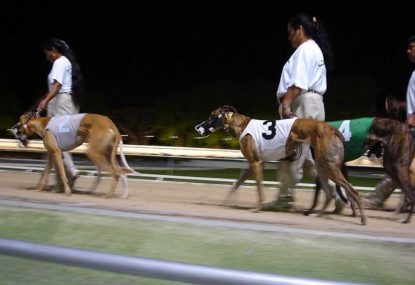TWO GOOD! Zahra wins back-to-back Melbourne Cups on Without a Fight as three horses pull up lame
Without a Fight completed the rare Caulfield Cup-Melbourne Cup double on Tuesday as star jockey Mark Zahra went back-to-back in the big one after…

The recent spotlight on greyhound racing will have come out of the blue for many people, but not to those familiar with the sport in NSW.
For a long time people had been wondering where, exactly, the sport was headed, who was benefiting, and whether there was a better way.
In late 2012, a large group of greyhound trainers basically went on strike for two weeks. Meetings were cancelled, Group races were decimated and Wentworth Park was reduced to 280m races and uncompetitive events.
But what did they want and why did they take such drastic action?
What did they want?
The stated demands were for an Upper House Inquiry into the sustainability of greyhound racing in NSW. Post-privatisation the fixed distribution of TAB-generated revenue was leaving greyhound racing short.
A distribution model based on turnover would have resulted in an estimated $10 to $15 million annually returned to the sport. The NSW Government doesn’t miss out either, taking a considerably higher return than in Victoria.
But the regulatory model was also being questioned by many, both inside and outside the sport. The commercial and regulatory functions of the sport had been merged into one body, GRNSW. Although commonly referred to as ‘self regulating’, the board was independent of greyhound racing and appointed by the government.
Apart from themselves, some participants thought that it wasn’t really clear on whose behalf GRNSW were making decisions, and were inherently contradicted, leaving them unable to deal effectively with the integrity and welfare aspects of the sport while also promoting it.
The Upper House in NSW required either the vote of the Shooters and Fishers and the Christian Democratic Party to support the Government, or all of Labor, the Greens, Shooters and Fishers and the CDP if the Government didn’t.
The Shooters and Fishers negotiated with the Greens for an inquiry, and the pressure applied by the greyhound racing participants eventually prevailed, with broad terms of reference that included the financial sustainability of the sport, integrity and animal welfare.
What happened at the inquiry?
Members of the public were able to make submissions to the inquiry under parliamentary privilege. Certain people, usually representing interested parties, were questioned by the committee while members of the public could apply to have five minutes to say their piece.
The inquiry created an enormous amount of interest, over 1000 people or interest groups made submissions. While most people give little thought to greyhounds, there was clearly a significant amount of people in the community who feel strongly about them.
The evidence was compelling. Greyhound racing had been increasing in popularity with the punters, surpassing harness racing in turnover. The intercode agreement meant that people within the sport did not share in this success and were leaving the sport in numbers. The intercode agreement was reviewed after 15 years, but too much faith was placed in the review translating into meaningful change.
Meanwhile, GRNSW had dropped far behind Victoria in taking greyhounds from the track to the couch. The regulation of greyhound racing by GRNSW, the same body that promoted the sport, was placed under sustained criticism by participants and welfare groups alike.
What did the inquiry recommend?
The committee members were split, with Labor, Liberal and the Shooters and Fishers making one set of recommendations, and the Greens another. Again, these have been made public and I urge those interested to search for themselves.
Ultimately, the greyhound racing participants didn’t achieve their goal of renegotiating the intercode agreement, while GRNSW was spared the axe and major structural reform, albeit temporarily.
Nevertheless many people were given the opportunity to air their views and few held back their thoughts. When the Four Corners episode aired the response of the NSW Government was swift, sacking the entire board and CEO of GRNSW, at least in part vindicating their many and varied critics.
The lack of vision
The underlying problems with GRNSW really came down to a lack of purpose and vision. It seemed as though a lot of people, and greyhounds, were subservient to the desires of the Government, TAB and feeding the beast of wall-to-wall racing.
Articulating a better way seemed beyond the governing body, and there were no mechanisms in place to change that.
Surely there is a better way, and I’m optimistic that the inevitable focus on greyhounds over the next six months will initiate that.